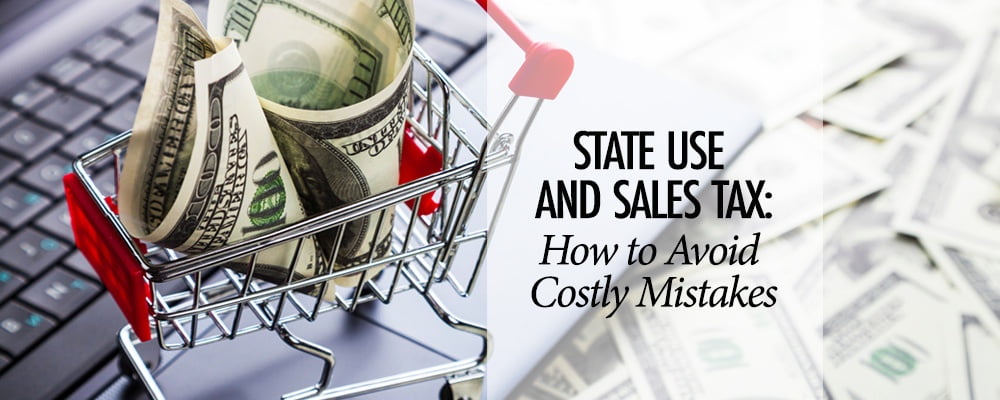- How often are your business office supplies or equipment purchased on-line?
- Does your company review these purchases to ensure sales tax has been paid?
- What happens if the sales tax was not paid at the time of purchase?
With the ease and convenience of online and remote ordering, many businesses find themselves purchasing a significant amount of supplies and equipment online. However, chances are your business does not have a policy in place to identify online purchases where sales tax has not been paid at the time of purchase and remits use tax on these items. This can result in a very expensive addition to your online purchase when you receive a sales and use tax audit notice and the first thing the auditor catches is your online purchase with no sales tax paid and the company has not remitted use tax.
States Expect Consumers to Remit Use Tax Periodically
When a consumer in any state purchases product that is subject to sales tax, if sales tax hasn’t been paid at the time of purchase, then the state will expect the consumer to remit use tax on a periodic basis. For individuals, this is typically a simple addition upon filing the individual income tax return. For businesses, however, a monthly, quarterly or annual remittance is expected, based on state sales tax law.
Sales and Use Tax Audits Are on the Rise
Sales and use tax audits are on the rise as state tax departments realize that on-line purchasing by businesses has increased significantly over the last few years and use tax remittances have not kept pace. Audit period’s likely span several years with the chances of a significant tax liability assessed. There are different methods to compute a use tax deficiency during an audit and the examiner will use guidance provided by their state tax administration to conduct the audit. The tax liability from an audit can easily expand into thousands of dollars once the error rate has been applied to all potentially taxable purchases.
In order to be prepared when the state sales and use tax auditor comes knocking at the door, every business should establish procedures to review any disbursement transaction including vendor invoices, credit card statements and receipts to ensure that sales tax has been properly paid. If not, it is the business’s responsibility to calculate and remit use tax.
Common areas of Use Tax Oversight May Include:
-
- Purchasing equipment and supplies from an out of state vendor that is not required to withhold sales tax from the purchase.
- Purchasing equipment and supplies from a supplier where there is a resale certificate on file, but the purchases do not qualify for the resale exemption.
- Credit card purchases, especially when no receipt is present (this includes most on-line purchases).
Specific Guidance for Virginia, Maryland and the District of Columbia
- Virginia sales and use tax rates range from 5.3% to 7% depending on the location of your business. Sales and use tax returns are due monthly, quarterly or annually based on your particular businesses situation.
- Maryland sales and use tax rates range from 6% to 9% depending on the type of goods purchased. Sales and use tax returns are due monthly.
- District of Columbia sales and use tax rates range from 6% to 10.25% depending on the type of goods purchased. Sales and use tax returns are due monthly, quarterly or annually based on your particular businesses situation.





